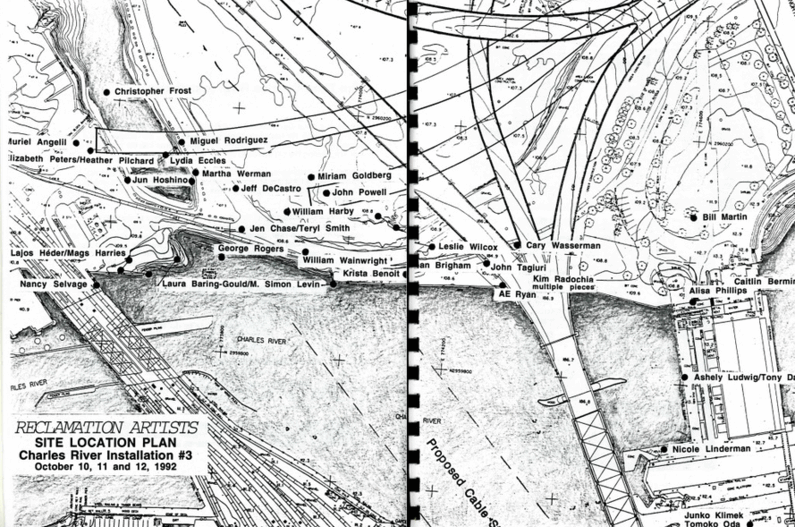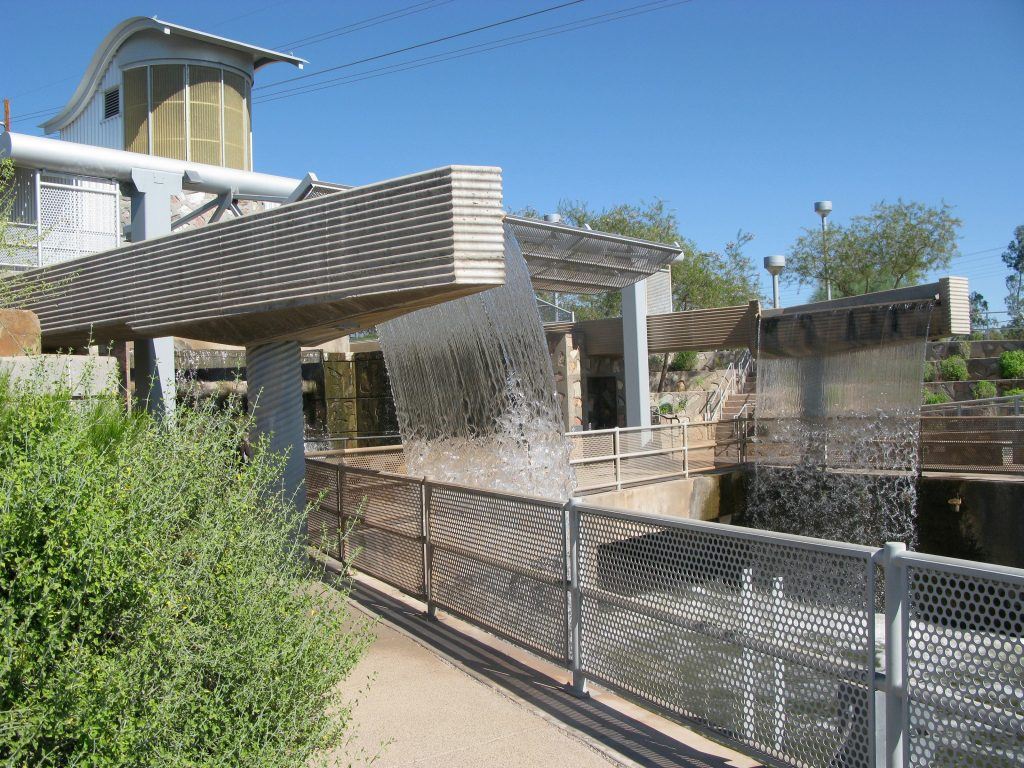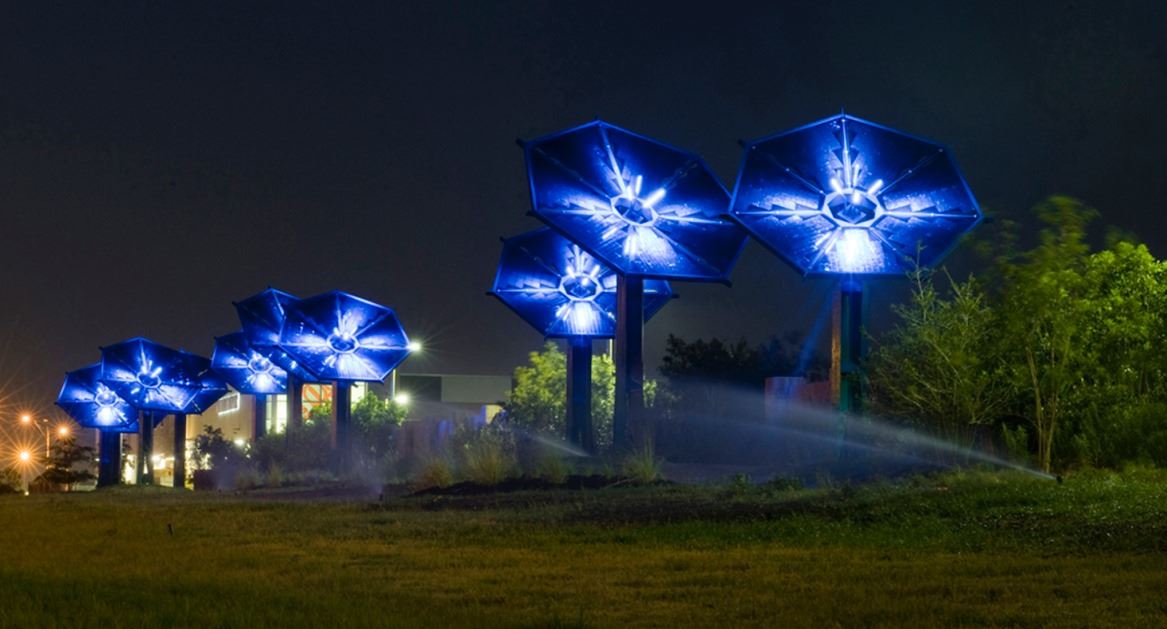
MEMBER SPOTLIGHT
July 11, 2022
This week we recognize the important ecological work of Cambridge (MA,USA) artist Mags Harries.
In the 1950's The Emerald Necklace, Fredrick Law Olmsted's chain of parks following the Muddy River, was broken when Sears & Roebuck put a parking lot over one of its links. With that a portion of The Muddy River was put into a culvert. In the late 1980s, Mags Harries with students at the School of the Museum of Fine Arts carried reeds and buckets of water between the divided segments of the River. They filled the buckets at one end and emptied them in the other, metaphorically reconnecting the River (above). Many of her early temporary projects involved community participation and social action, including Winding Down the Charles, where community members helped to physically wind the length of the Charles River into a ball of string, and Speed of Light, for which she organized with her students a twenty-mile bicycle ride to bring attention to a planned transportation 'Urban Ring' around Boston. Click on images to get more information

Reclamation Artists (above), performed in the late 1980s through the 1990s, was a group of approximately 100 environmental artists, including Harries and many of her students. They were interested in producing site-specific art installations which included three at the Charles River Basin in the area of the Central Artery construction sites, one at the Fort Point Channel area behind South Station, and one at Boston’s City Hall Plaza.
As a group, Reclamation Artists (RA) were committed to working on important though little used or misused sites in Boston. Through temporary art installations they called attention to evocative artifacts, aspects of history and ecology, past and future city building that often escaped the attention of planners and designers. They explored big issues through personal perceptions. They looked closely at what they found at these sites to reclaim their stories, and deeper meanings. Through this process they hoped to affect the future of these places and the way we build our city.

The Bronx River Golden Ball was performed by Harries from 1999 to 2001, and is a universal, positive image that can be seen as the sun, the world, energy, life. Its ambiguity encourages people to invent stories about it and add their own mythology. The reoccurring, multimedia New York City public art event was designed to tie together the fractured experience of the Bronx River and the complex layers of people and artifacts that exist along the River. The Golden Ball is a metaphor and physical link to the River, calling for a greater sense of community. It also directs attention to its struggling ecology, asking people to reclaim the Bronx River.

WaterWorks (2003) at Arizona Falls (above) is a well used public space, an art environment and a functioning hydro-power plant on the Arizona Canal in Phoenix designed by Mags Harries and her husband and public art partner, architect Lajo Heder. The site is focused on the water room and includes a power platform/dance floor; an outdoor classroom; pedestrian bridge; shade structures; seating; riparian terraces; and sustainable plantings, all designed by the artist led team. The site brings into focus the role of water in the history of Phoenix and in the future of green-energy, exploring water as both a utilitarian commodity and as a beautiful transformative substance. Surrounded by desert, the site is a lush environment full of water sensations. The project won the top environmental design award for the Phoenix area.
SunFlowers (2009), also designed by Harries and Heder is an Electric Garden including fifteen sculptural solar collectors that generate energy used for lighting at night. The 15 kilowatts of additional energy that they produce is fed into the Austin, Texas electrical grid for credit to fund the installation’s maintenance. During the day the SunFlowers provide a shaded grove for a pedestrian path and at night the LED’s in the flower stamens glows with blue light. The project is both an icon for the sustainable, LEED certified Mueller Development and a highly visible metaphor for the energy conscious City of Austin. Like real flowers, the SunFlowers transform sunlight into energy.

Mags Harries was born in Wales, graduated from the Leicester College of Art and Design, received her MFA at Southern Illinois University, and is currently senior faculty at the School of the Museum of Fine Arts in Boston. She is a multimedia artist who uses found objects, drawing, photography, performance, new technology, and 3D printing to fabricate visually alluring work. In 1990, Harries and her husband Lajos Héder, an architect and city planner, formed the Harries/Héder Collaborative. Together they activate public spaces that combine practical functions with strong metaphorical significance and bring communities together. Harries has exhibited at The Institute of Contemporary Art in Boston, and the Museum of Fine Arts, Boston, and a retrospective of her work at the Decordova Museum, in Lincoln, MA. She has received a fellowship and residency from The Bogliasco Foundation in Genoa, Italy, and attended residencies at the Baer Art Center (Hofsos, Iceland), Civitella Ranieri (Italy), and The American Academy (Rome, Italy). Water and water-related issues have been and continue to be a primary theme both in Harries’s individual studio practice and in her public art collaborations. www.magsharries.com
Featured Images: ©Mags Harries, Re-Membering the River, student collaborations, circa 1980s; The Reclamation Artists (RA), Charles River, Near Longfellow Bridge, Boston, MA (late 1980’s – 90’s); The Bronx River Golden Ball, 1999-2001, New York; WaterWorks at Arizona Falls, 2003, Water Room framed by the aqueduct waterfalls, Photo: Salt River Project Archives; Sunflowers, Electric Garden, 2009, public art, Austin, Texas; below, Mags Harries with her most recent series titled Adrift, iceberg sculptures.
